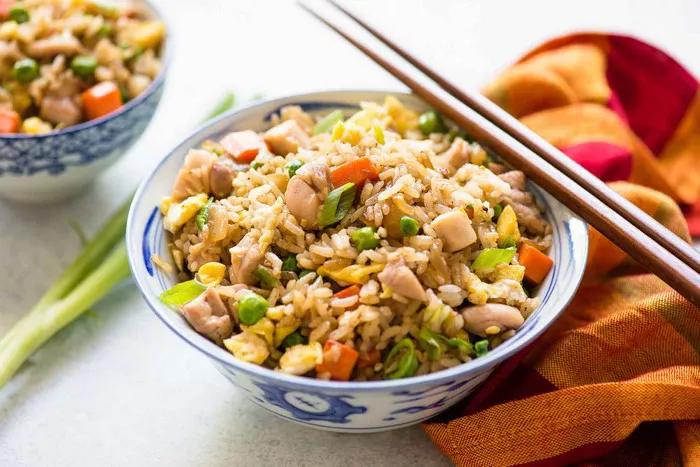Rice is a staple food for more than half of the world’s population and is a crucial component of various cultural cuisines. With a wide variety of rice types available, it can be challenging to determine which one is the healthiest choice. When it comes to selecting the most nutritious rice, several factors come into play, including nutritional content, processing methods, and individual dietary needs. In this comprehensive guide, we will explore various rice varieties and their health benefits, helping you make informed decisions about the healthiest rice to include in your diet.
Understanding Rice: A Global Staple
1. Importance of Rice in Global Diets
Rice is a dietary staple in many regions, particularly in Asia, where it serves as a primary source of calories and nutrients for millions of people. Its versatility, easy cultivation, and ability to adapt to various climates have contributed to its widespread consumption.
2. Rice Varieties and Processing
Rice comes in various types, including white, brown, basmati, jasmine, black, red, and wild rice. Each type has its unique taste, texture, and nutritional profile. The level of processing also varies, with some rice types undergoing more refining than others.
7 Healthiest Rice to Eat
1. White Rice
White rice is the most commonly consumed type of rice globally. It is milled to remove the outer bran and germ layers, leaving only the starchy endosperm. As a result, white rice has a smoother texture and longer shelf life but may be lower in certain nutrients compared to other rice varieties.
2. Brown Rice
Brown rice retains the bran and germ layers, making it a more nutritious option than white rice. It is higher in fiber, vitamins, minerals, and antioxidants, providing additional health benefits compared to its refined counterpart.
3. Basmati Rice
Basmati rice is a long-grain variety known for its distinct aroma and flavor. It is available in both white and brown forms, with brown basmati being the more nutritious choice due to its higher fiber and nutrient content.
4. Jasmine Rice
Jasmine rice is another fragrant long-grain variety, commonly found in Asian cuisine. It is available as both white and brown rice, with brown jasmine rice being the more nutritious option.
5. Black Rice
Black rice, also known as forbidden rice, is a type of whole grain rice that is rich in antioxidants, particularly anthocyanins, which give it its dark purple color. Black rice is a nutritious choice and offers a unique taste and texture.
6. Red Rice
Red rice is a whole grain rice variety with a reddish-brown hue. It contains higher levels of antioxidants and certain nutrients compared to white rice, making it a healthier choice.
7. Wild Rice
Wild rice is not technically a rice variety but rather a seed of aquatic grass. It is a nutritious whole grain with a nutty flavor and contains more protein and fiber than most other rice types.
Key Considerations for Choosing Healthier Rice
1. Nutrient Content
When selecting rice, consider its nutrient content, including fiber, vitamins, minerals, and antioxidants. Whole grain rice varieties, such as brown, black, red, and wild rice, tend to be more nutrient-dense compared to refined white rice.
2. Fiber Content
Fiber is an essential component of a healthy diet and plays a crucial role in digestive health and disease prevention. Brown, black, red, and wild rice are excellent sources of dietary fiber, providing more than white rice.
3. Antioxidants
Antioxidants help protect the body from oxidative stress and inflammation, reducing the risk of chronic diseases. Black rice, red rice, and certain whole grain varieties contain higher levels of antioxidants than white rice.
4. Glycemic Index
The glycemic index (GI) measures how quickly a carbohydrate-containing food raises blood sugar levels. Foods with a high GI can cause rapid spikes in blood sugar. Whole grain rice varieties generally have a lower GI compared to refined white rice.
5. Processing
Choose minimally processed rice varieties to retain the maximum nutritional benefits. Whole grain rice varieties, such as brown, black, and red rice, undergo minimal processing and retain their bran and germ layers.
Incorporating Healthier Rice into Your Diet
1. Switch to Brown Rice
Replacing white rice with brown rice is an easy and effective way to boost your nutrient intake. Brown rice can be used in a variety of dishes, from pilafs to stir-fries, and offers a nuttier flavor and slightly chewy texture.
2. Try Black Rice
Black rice is an excellent option for adding color and unique flavor to your meals. It pairs well with both savory and sweet dishes and can be used in salads, side dishes, and desserts.
3. Experiment with Red Rice
Red rice is another nutritious option that adds a pleasant nutty taste to your dishes. It is a great choice for pilafs, rice bowls, and hearty salads.
4. Combine Rice with Other Whole Grains
For even greater nutritional diversity, consider combining different types of whole grain rice with other whole grains like quinoa, barley, or farro in your recipes.
5. Enhance Flavor with Spices and Herbs
To make your healthier rice dishes more flavorful, experiment with a variety of spices, herbs, and seasonings. Adding fresh herbs, garlic, ginger, or a pinch of turmeric can elevate the taste and nutritional value of your rice dishes.
Conclusion
Rice is a beloved and essential staple in diets worldwide, offering various tastes, textures, and nutritional benefits. The healthiest rice to eat depends on individual dietary needs, preferences, and health goals. Whole grain rice varieties, such as brown, black, red, and wild rice, offer higher levels of fiber, vitamins, minerals, and antioxidants compared to refined white rice. These whole grain options can contribute to better digestive health, reduced risk of chronic diseases, and overall well-being.
When selecting rice for your meals, consider factors such as nutrient content, fiber levels, glycemic index, and processing methods. Incorporating healthier rice options into your diet can add a burst of flavor, color, and nutrition to your culinary adventures.
Remember that a balanced diet includes a variety of foods, and rice can be part of a nutritious and diverse meal plan when paired with other nutrient-rich ingredients. Always consult with a healthcare professional or a registered dietitian for personalized dietary advice based on your individual health status and dietary needs. With mindful choices, you can savor the nutritional benefits of rice while enjoying a diverse and well-rounded diet.






















